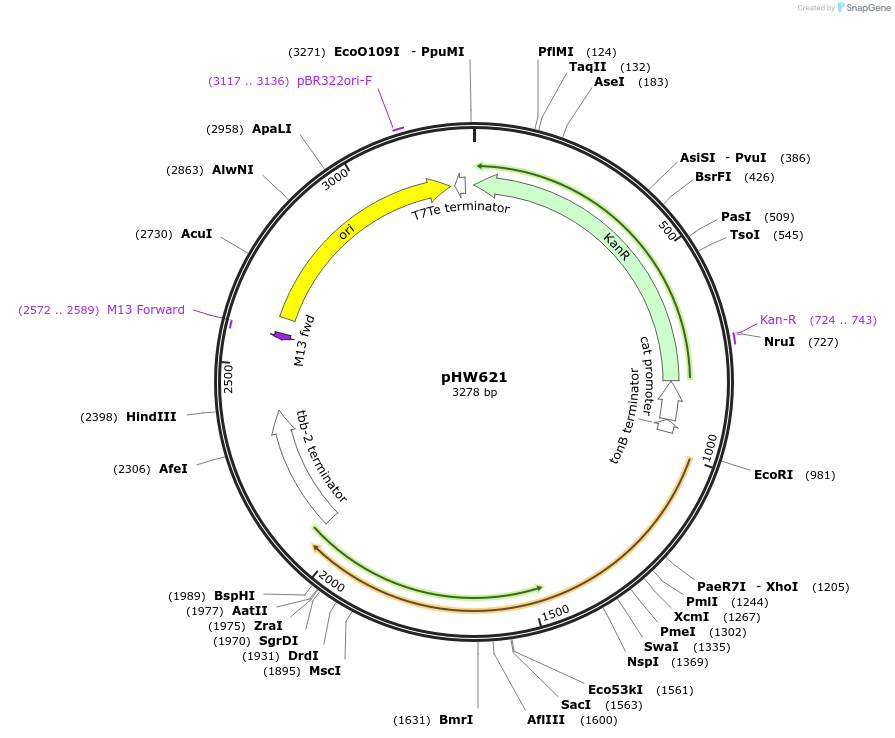pHW621
(Plasmid
#229867)
-
PurposeEntry vector with cGAL[cGAL(DBD)-linker-QFAD]-tbb-3'UTR in slot 5 (for SapTrap assembly)
-
Depositing Lab
-
Sequence Information
Ordering
| Item | Catalog # | Description | Quantity | Price (USD) | |
|---|---|---|---|---|---|
| Plasmid | 229867 | Standard format: Plasmid sent in bacteria as agar stab | 1 | $89 | |
Backbone
-
Vector backbonepNM3469
-
Vector typeWorm Expression
Growth in Bacteria
-
Bacterial Resistance(s)Kanamycin, 50 μg/mL
-
Growth Temperature37°C
-
Growth Strain(s)NEB® Turbo competent E. coli
-
Copy numberHigh Copy
Gene/Insert
-
Gene/Insert namecGAL[cGAL(DBD)-linker-QFAD]-tbb-3'UTR
-
SpeciesC. elegans (nematode), Synthetic
Cloning Information
- Cloning method Gibson Cloning
Resource Information
-
Supplemental Documents
Terms and Licenses
-
Academic/Nonprofit Terms
-
Industry Terms
- Not Available to Industry
Trademarks:
- Zeocin® is an InvivoGen trademark.
Depositor Comments
The E. coli strain DH5α bacterial clone with this construct grows slowly, resulting in noticeably small numbers of colonies following overnight incubation. The DNA construct is likely toxic to the E. coli strain DH5α, resulting in unexpected random insertion or deletion. If this plasmid is transformed into DH5α competent cells. It is advisable to routinely sequence of the section of cGAL(DBD)-linker-QFAD-tbb-2 3'UTR following each fresh miniprep from a new bacterial culture to confirm absence of any mutations. To overcome this issue, the deposited bacterial stock of this plasmid is with NEB® Turbo competent E. coli, which tolerates this construct better and produces the plasmid with the correct sequence.
These plasmids were created by your colleagues. Please acknowledge the Principal Investigator, cite the article in which the plasmids were described, and include Addgene in the Materials and Methods of your future publications.
-
For your Materials & Methods section:
pHW621 was a gift from Han Wang (Addgene plasmid # 229867 ; http://n2t.net/addgene:229867 ; RRID:Addgene_229867) -
For your References section:
A versatile site-directed gene trap strategy to manipulate gene activity and control gene expression in Caenorhabditis elegans. Khan H, Huang X, Raj V, Wang H. PLoS Genet. 2025 Jan 22;21(1):e1011541. doi: 10.1371/journal.pgen.1011541. eCollection 2025 Jan. 10.1371/journal.pgen.1011541 PubMed 39841730



